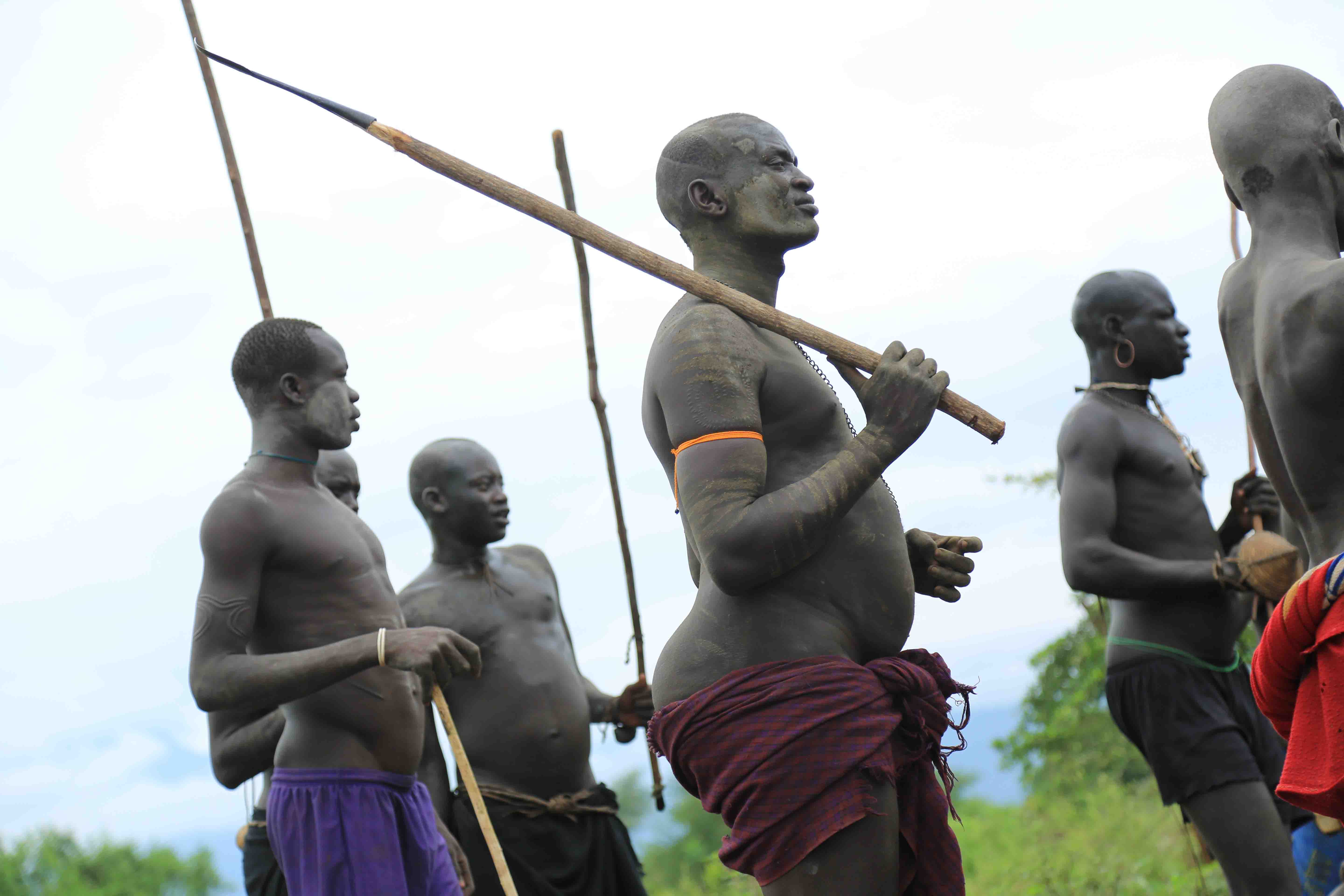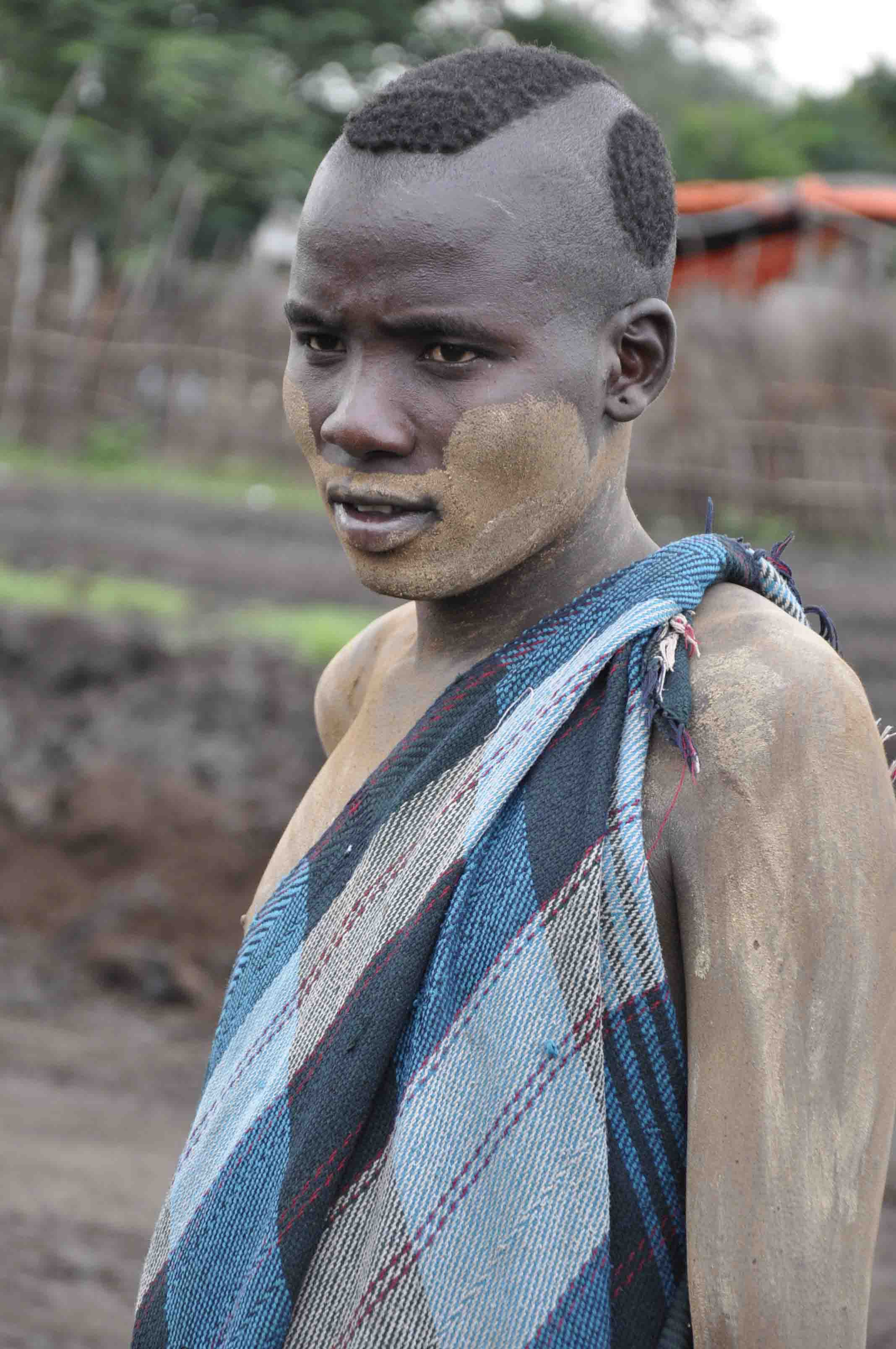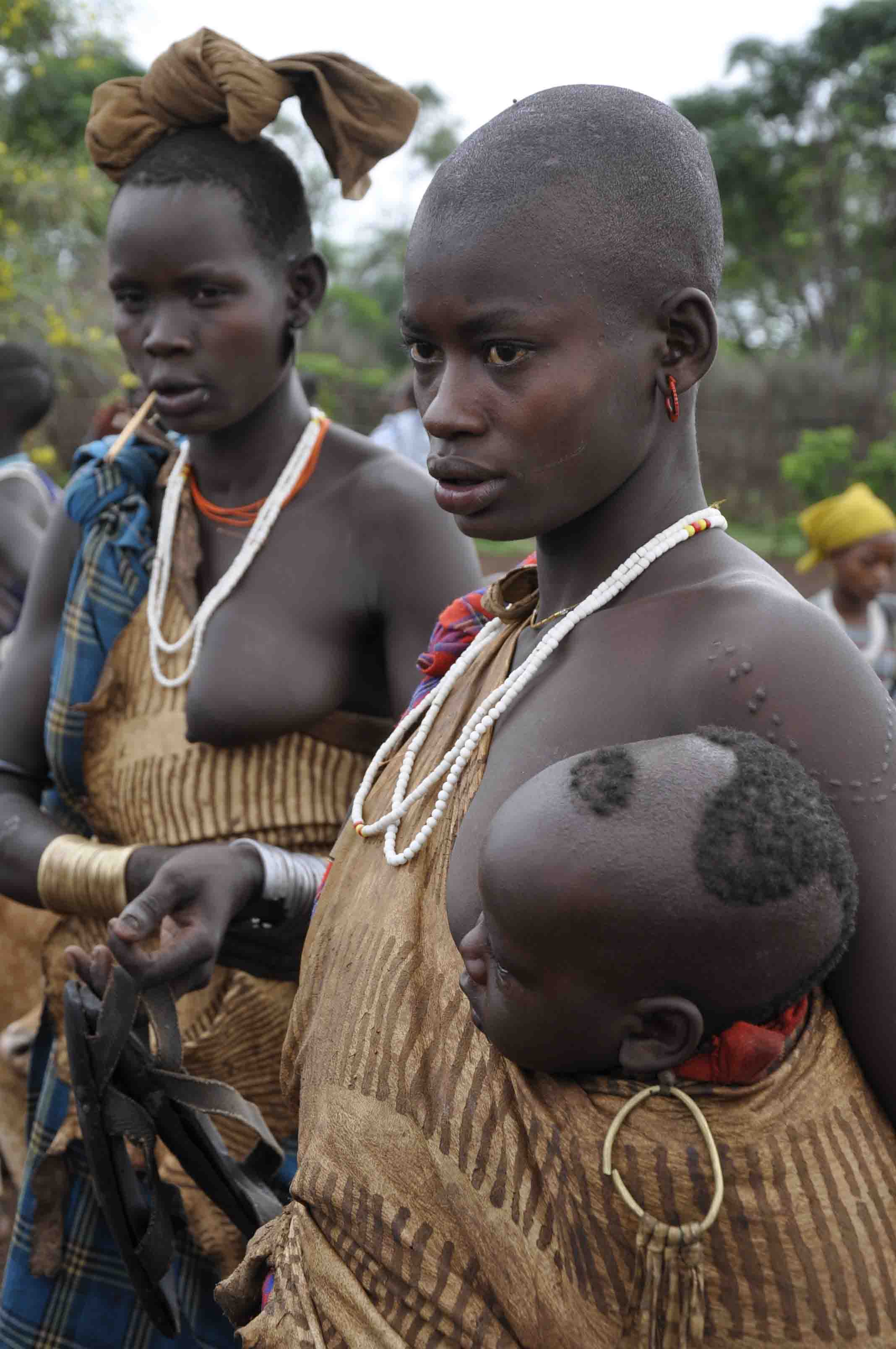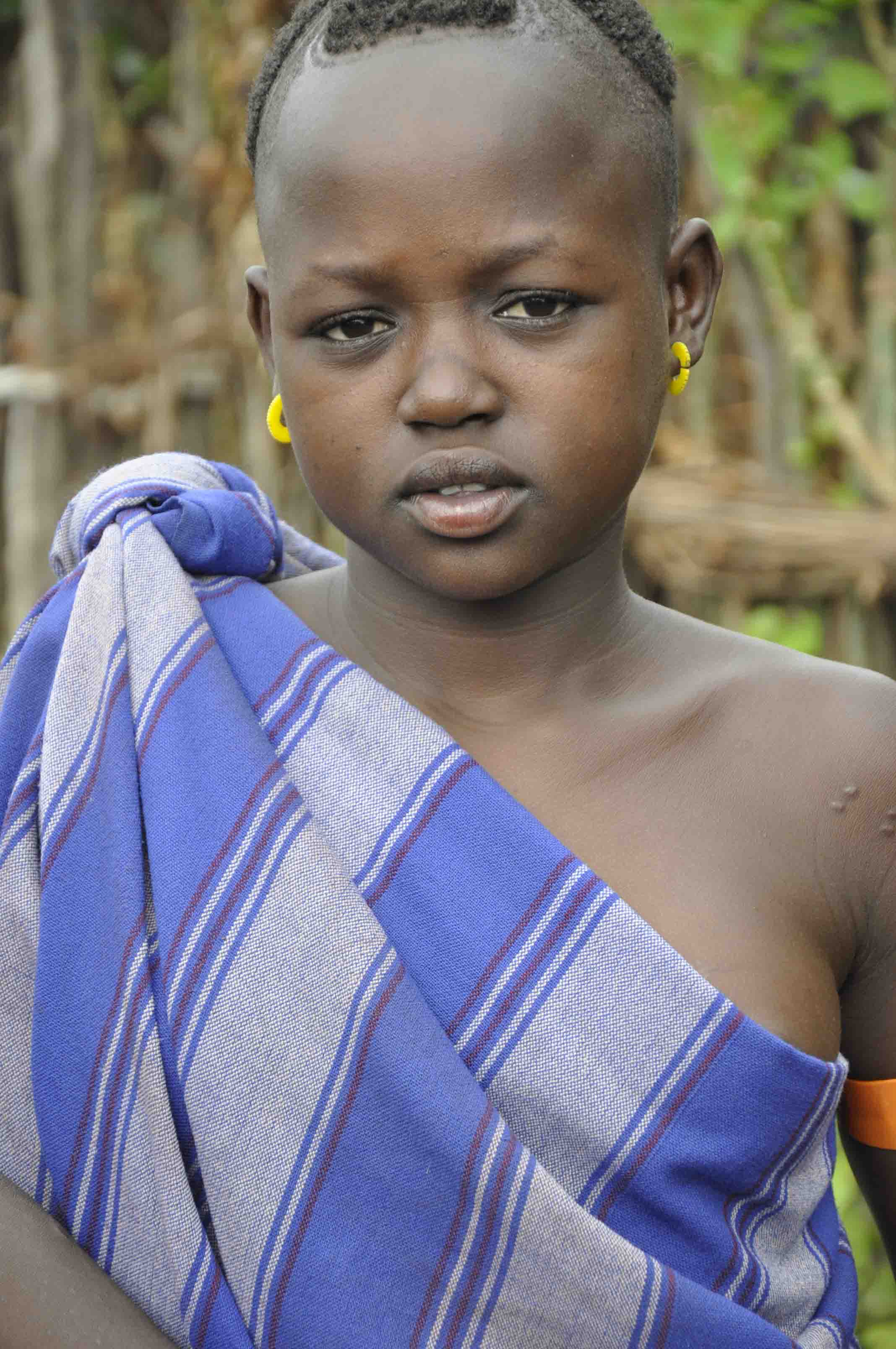Bodi




The Bodi Nationality lives in Salamago District. Previously members of the nationality have settled around Alaku Mountain, at a place called Bertosay in Maji District in todays Bench Maji Zone, before their settlement of these days. This is according to the folk by the aged elderly of the nationality. Their main cause of movement to the current place is in search of grazing and water for their cattle.
The number of Bodi nationality members who moved from Bertosay were very small that the main tribes in it were only two. These are Timbatch and Tilugn. Both have different sub tribes under them. Timbatch contains Minuguat, Ajit, Merkatch, Digd, Yirbatch, Muketchna and Nurbatch. The Tilugn contains Kurmatch, Ungitto, Gulatch, Mengu, Galatch, Kolhoit and Bolyut sub tribes.
In addition to these main parts of tribes, there are two tribes called Mirkonya and Bergulay which perform different cultural ceremonies to protect the community from different evils.
The language of The Bodi Nationality is Bodi. It is Nilo-Saharatic. Members of the Nationality also speak the languages of the nationalities around them at as a second language.
As the land of the nationality is not comfortable for agriculture the main livelihood of the people is rearing. However; they produce maize and sorghum for daily consumption produced by using hoe and banga (a kind of sword).
Cultural Administration System
The Bodi who reins over activities of cultural administration is Kumrut (King). There are different parts under him called Kamsit, Galatch, Mirkenya and Mora. They work on different spiritual and administrative duties.
The King is easily identified from the rest of the leaders under him and others by the ornament he wears on his neck and a hand bracelet called Lolongo.
The king leads the nationalitys spiritual and administrative duties. Because of these he does not eat the meat of unblessed cattle, hen and cattle slaughtered at mourners house. He also doesnt visit a woman who has given birth. He doesnt drink the milk of a cow unless the cow is brown. He is also restricted not to do other things. When human and animal disease occurs, rain at scarce and famine occurs the people come to the king , perform cultural activities and pray for the eradication of disease, coming of rain and termination of hunger.
If the king is not in the area for different reasons or if an emergency happens, in the structure next to the king Kumsit replaces him and does different spiritual activities.
There are structures in the nationalitys cultural administration called Galeth, Mirkayna and Mora. Their main activity is to concentrate on spiritual activities than administrative work. It is told that Galeth performs cultural ceremonies and has the power to cease invasion of locust/birds by holding milk in a vessel made of gourd. Mirkayna is believed to be guardian of the Omo River. He anoints mud on his face, drinks water from the river so that crocodiles do not attack people and animals.
He prays to his god, saying crocodiles do not eat anything else except soil of the earth as their diet. Mora on his part facilitates reconciliation when conflict occurs specially with Mursi nationalities. He does this with Mursis king and elderly. On the reconciliation process he equally shares the skin of a white cattle with his Mursi counterpart for a peaceful settlement of the reconciliation.
In addition to spiritual duties Kumrut does administrative works mainly. When looting of cattle happens among the nationality members he gives verdict.
When the looting is on neighbouring nationalities by members of his own nationality he penalizes the robber and returns the cattle to the owners.
Passing over power is based on inheritance. The father passes power to his oldest son. The first parameter of taking is that the tribe of the mother of the enthroned. If the heir fulfils the parameters to take power or if he doesnt because of age, little brother of the father becomes reagent. The enthronement starts while the king strives for his life. At this time the heir hits his fathers forehead with his own. Ornaments as well as animal fats are worn on his neck by them to show he is anointed son of a landlord blessed by them.
When conflict occurs among members of the nationality, they perform different cultural activities led by the king so that there would be reconciliation.
Dancing Order
There are two dancing orders of The Bodi Nationality. They are Heret and Kiel. Heret dancing starts when crops form buds and it lasts until harvest time to show it is time for surplus product. The Kiel dancing takes place from the beginning of Ethiopian June to the end of the same month. Kenet is taken as a new year festival. An adolescent and adult from a well to do family eat the mixture of blood and milk for four months and keeps himself from sexual intercourse. After the feeding order is completed a banquet is made at the kings house. People who are fed this way are gathered to dance this dance at the same place.
At this cultural ceremony girls are also made to dance together wearing special cultural clothing. The dancing starts during the day and lasts till seven oclock in the evening. Then the intestine of cattle is read to predict the future. The youth feed the cattle properly. They defend the country from enemy. Hey also till the ground properly. They promise for these.
Finally the Body parts of the youth and adults who are gathered and fed are measured using a rope. If a person came to the king more obese than last year, he is encouraged to continue. If the person lost weight he is told by the king to improve.
Generally The Kiel dance is a Bodi Nationality culture which is an event in which the youth pledge for their nationality.